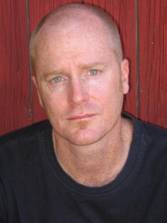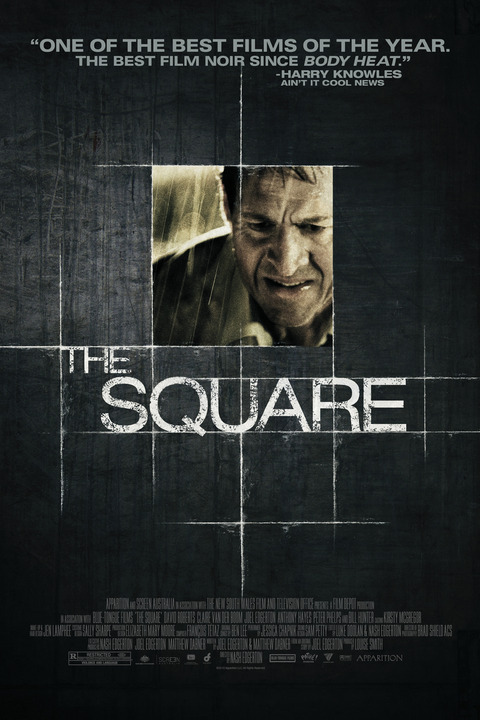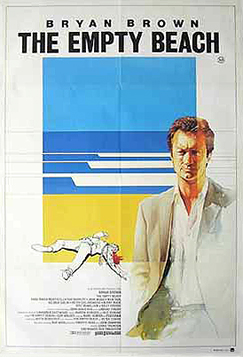Search
-
Recent Posts
- Dishing up Pulp Curry in a new way: why I am starting a Substack newsletter
- Book reviews: Deadly dames, midcentury Brit pulp and 1970s science fiction
- Mackenna’s Gold (1969): Gold, Ghosts and Frontier Violence
- Orphan Road book launch
- Orphan Road now available
- Pre-orders open for my new novel, Orphan Road
- Cover reveal: Orphan Road, my follow up to Gunshine State
- Breakfast in the Ruins podcast: New English Library Bikermania
- Why 1973 was the year Sidney Lumet took on police corruption
- Men’s Adventure Quarterly: Gang Girls issue
Categories
- 1960s American crime films
- 1970s American crime films
- 1980s American crime films
- 1990s American crime films
- Adrian McKinty
- Albert Dekker
- Andre De Toth
- Angela Savage
- Angie Dickinson
- Anthony Zerbe
- Asian noir
- Australian crime fiction
- Australian crime film
- Australian noir
- Australian popular culture
- Australian pulp fiction
- Australian television history
- Ava Gardner
- Beat culture
- Belmont Tower Books
- Ben Wheatley
- Billie Whitelaw
- Black pulp fiction
- Blaxsploitation
- Book cover design
- Book Reviews
- British crime cinema
- British pulp fiction
- Bryan Brown
- Burt Lancaster
- Carter Brown
- Charles Durning
- Charles Willeford
- Chester Himes
- Christopher G Moore
- Christopher Lee
- Cinema culture
- Claude Atkins
- Coronet Books
- Crawford Productions
- Crime Factory
- Crime Factory Publications
- Crime fiction
- Crime fiction and film from Africa
- Crime fiction and film from Cambodia
- Crime fiction and film from China
- Crime fiction and film from India
- Crime fiction and film from Indonesia
- Crime fiction and film from Japan
- Crime fiction and film from Laos
- Crime fiction and film from Latin and Central America
- Crime fiction and film from Malaysia
- Crime fiction and film from New Zealand
- Crime fiction and film from Scandinavia
- Crime fiction and film from Singapore
- Crime fiction and film from South Korea
- Crime fiction and film from Thailand
- Crime fiction and film from the Philippines
- Crime Fiction and film set in Vietnam
- Crime film
- Dangerous Visions and New Worlds Radical Science Fiction 1950 to 1985
- David Goodis
- David Peace
- David Whish-Wilson
- Derek Raymond
- Diana Dors
- Dirk Bogarde
- Don Siegel
- Don Winslow
- Donald Westlake aka Richard Stark
- Dystopian cinema
- Ernest Borgnine
- Eurocrime
- Fawcett Gold Medal Books
- Femme fatale
- Fernando Di Leo
- Filipino genre films
- Film Noir
- Forgotten Melbourne
- French cinema
- French crime fiction
- Garry Disher
- Gene Hackman
- George V Higgins
- Georges Simenon
- Ghost Money
- Giallo cinema
- Gil Brewer
- Girl Gangs, Biker Boys and Real Cool Cats: Pulp Fiction & Youth Culture, 1950-1980
- Gloria Grahame
- Gold Star Publications
- Gregory Peck
- Gunshine State
- Heist films
- Horror
- Horwitz Publications
- Humphrey Bogart
- Ian Fleming
- Interviews
- Ira Levin
- James Caan
- James Crumley
- James Ellroy
- James Hadley Chase
- James Woods
- Jim Brown
- Jim Thompson
- Joel Edgerton
- John Frankenheimer
- Joseph Losey
- Karen Black
- Kerry Greenwood
- Kinji Fukasaku
- Larry Kent
- Laura Elizabeth Woolett
- Lee Marvin
- Leigh Redhead
- Lindy Cameron
- M Emmet Walsh
- Mad Max
- Mafia
- Malla Nunn
- Martin Limon
- Megan Abbott
- Melbourne International Film Festival
- Melbourne Writers Festival
- Men's Adventure Magazines
- Michael Caine
- Michael Fassbender
- Mickey Spillane
- Monarch Books
- Ned Kelly Awards
- Neo Noir
- New English Library
- Newton Thornburg
- Noir Con
- Noir fiction
- Non-crime reviews
- Oren Moverman
- Orphan Road
- Ozsploitation
- Pan Books
- Parker
- Paul Newman
- Peter Boyle
- Peter Corris
- Peter Strickland
- Peter Yates
- Poliziotteschi
- Pulp fiction
- Pulp fiction in the 70s and 80s
- Pulp fiction set in Asia
- Pulp Friday
- Pulp paperback cover art
- Qui Xiaolong
- Raymond Chandler
- Richard Burton
- Richard Conte
- Robert Aldrich
- Robert Mitchum
- Robert Ryan
- Robert Stone
- Rock Hudson
- Roger Smith
- Rollerball
- Rosaleen Norton
- Roy Scheider
- Rural noir
- Sam Levene
- Sam Peckinpah
- Samuel Fuller
- Science fiction and fantasy
- Scripts Publications
- Sidney Lumet
- Sidney Poitier
- Simon Harvester
- Snowtown
- Snubnose Press
- Spies
- Stanley Baker
- Sterling Hayden
- Steve McQueen
- Sticking it the the Man Revolution and Counter Culture in Pulp and Popular Fiction 1950 1980
- Stuart Rosenberg
- Tandem Books
- Tart noir
- Tartan Noir
- Ted Lewis
- Toni Johnson Woods
- True crime
- Vicki Hendricks
- Victor Mature
- Vintage mug shots
- Vintage pulp paperback covers
- Wallace Stroby
- War film
- Westerns
- William Friedkin
- Woody Strode
- Yakuza films
- Yaphet Kotto
Nothing but noir
Recommended reading
The lurid world of pulp
- 20th century Danny Boy
- American Pulps
- Bear Alley
- Bloody, Spicy, Books
- Comics Down Under
- Everything second hand
- Existential Ennui
- Greenleaf Classic Books
- Irv O. Neil's Erotica is My Trade
- Killer Covers
- Lost Classics of Teen Lit 1939-1989
- Luminist Archives
- Men's Pulp Mags
- Mporcius Fiction Log
- Murder, Mayhem and Long Dogs
- Neglected Books
- Nocturnal Revelries
- Paperback Warrior
- Paperbacks of the Gods
- Pop Sensation
- Pulp artists
- Pulp Covers
- Pulp Crazy
- Pulp Flakes
- Pulp International
- Pulp Magazines Project
- Pulp Serenade
- Realms of the Night
- Romance Fiction Has a History
- Rough Edges
- Sin Street Sleaze
- Spy Guys and Gals
- The department of Afro American Research Arts & Culture
- The Dusty Bookcase
- The Haunted World of Richard Sala
- The Moon Lens
- The Nick Carter & Carter Brown Blog
- The Pulp & Paperback Fiction Reader
- Too Much Horror Fiction
- True Pulp Fiction
- Vault of Horror
- Vintage Nurse Romance Novels
- Vintage Romance Novels
- Welcome to the Pan Paperback
- Yellow and Creased
Support This Site
If you like what I do please support me on Ko-fi
Category Archives: Australian noir
Interview: David Whish-Wilson, part 2
Below is part two of the interview with David Whish-Wilson, the WA based author of Line of Sight. Part one of the interview can be viewed here.
 Is the history that you based Line of Sight on well known within WA? What was the reaction locally to the book?
Is the history that you based Line of Sight on well known within WA? What was the reaction locally to the book?
The murder of Shirley Finn is probably Perth’s most notorious unsolved murder, notorious because of the persistent (and correct) rumours of police involvement. You might even say that Shirley’s murder has achieved the status of myth – the kind of myth that develops when there’s so little on the public record, and which functions to fill in the gaps left by unanswered questions. As a writer, of course, that frontierland between truth and fiction and myth and legend is an interesting region to explore. The good news is that Line of Sight has been very well received over here, and it’s gratifying to have been contacted on a number of occasions by ex-policemen and ex-prostitutes and others from the period who have expressed their satisfaction that finally this story has been told in a fairly truthful manner, even if it’s a work of fiction.
I did toss up whether to write the murder of Shirley Finn as a work of fiction, or of non-fiction, and in the end decided for a couple of reasons to write it as a novel, primarily because there’s so little on the public record about her murder, and specifically because people are still very afraid to speak on the record.… Read more
David Whish-Wilson Interview part 1
David Whish-Wilson’s Line of Sight was one of my favourite crime fictions reads of 2010. A re-telling of the events following the murder of a notorious Perth brothel madam, Shirley Finn, the book deals with crime and corruption in seventies WA. It’s a fantastic piece of hard-boiled noir writing, unusual for the Australian scene. I’m obviously not the only person singing it’s praises, as Line of Sight is in the running for best first fiction book in the upcoming Ned Kelly Awards.
A review of Line of Sight appeared on Pulp Curry last year. Since then, I’ve been hassling David for an interview. A few weeks ago we finally pulled it off. As finding a time to talk by phone proved difficult, David very generously agreed to provide written answers via e-mail to my questions. His detailed responses are fascinating, particularly to someone such as myself with little knowledge of life in the West. Instead of cutting them back, I decided to run the interview in two parts. Part two will appear tomorrow.
Line of Sight takes as its starting point the real life murder in the seventies of a Perth brothel madam called Shirley Finn (known as Ruby Devine in the book). How did you come across the story of Finn and what made you think it would make the premise of a good crime story?… Read more
Heatwave
For years the 1982 movie Heatwave has languished in the shadow of director Phillip Noyce’s more recent and successful films.
It’s a great pity. Not only is Heatwave a dark, well-made thriller that can legitimately stake a place among the small group of Australian films with genuine noir sensibility, it is politically sharp-edged without coming across as either preachy or didactic.
Heatwave is one of two Australian films based loosely on the real life disappearance in 1975 of Juanita Nielson, a prominent local activist against mass development in the colourful vice quarter of inner Sydney known as Kings Cross. The other, Donald Crombie’s The Killing of Angel of Street, appeared the previous year. So close together were the two films that at one point they were reportedly both shooting at the different ends of the same inner Sydney street.
Heatwave takes place in the lead-up to Christmas and, as the title suggests, Sydney is sweltering after successive days of high temperatures. A group of Kings Cross residents are fighting attempts to demolish their houses to make way for a giant development named Eden, financed by businessman Peter Houseman (Chris Haywood).
For three years, young firebrand Kate Dean (Judy Davis) and Mary Ford, editor of the community newspaper, have led local opposition to Eden.… Read more
The Square: small town noir Australian style
 Tales of money, betrayal, lust and murder set in the underbelly of rural small town life are a major thematic strand of film noir. Australia’s contribution to this, released locally to mixed reviews in 2008, is The Square.
Tales of money, betrayal, lust and murder set in the underbelly of rural small town life are a major thematic strand of film noir. Australia’s contribution to this, released locally to mixed reviews in 2008, is The Square.
The location selected by first time director and writer Nash Edgerton is the central coast of New South Wales, where the laid back life-style and stunning countryside exist side by side with pockets of deep poverty and a highly casualised workforce.
The opening scene of The Square takes place at dawn. Two people are having sex in the back seat of a car to the accompanying drone of cars crossing a nearby overpass. They finish, pausing long enough for us to notice their wedding rings, before going their separate ways.
The man, Ray, pulls into a clearing in the middle of thick bushland and enters the portable office from which he is supervising the construction of a resort for honeymooners. The young woman, Carla, drives to her job in a hairdressing parlour.
Before long, Ray is getting a hard time down from Gil, the developer (long time Australian actor, Bill Hunter) for failing to keep costs down. There’s no need for anything fancy, Gil tells him, all they are building is a place were “couples can root in Jacuzzis”.… Read more






















